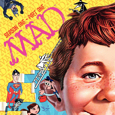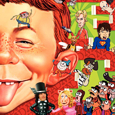Warner Bros. Animation (2010), Warner Home Video (September 20 2011), single disc, 146 mins, 1.78:1 letterboxed widescreen, Dolby Stereo Surround, Not Rated (nothing particularly offensive), Retail: $19.98
Storyboard:
The pages of classic spoof anthology Mad Magazine come to animated life, to lampoon various strains of popular culture…
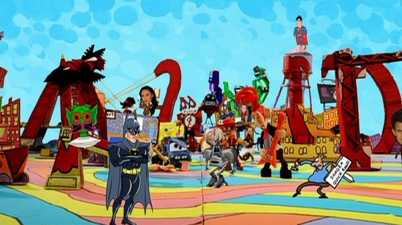
The Sweatbox Review:
From its beginnings in 1952 and over its almost 60-year run, Mad Magazine, and its curious mascot Alfred E. Neuman – the original “What, me worry?” kid – has become an instantly recognisable satirical American institution. Created by legendary comics magnate William Gaines and cartoonist Harvey Kurtzman when pressure groups were coming down hard on Gaines’ E.C. Comics brand of pulp horror stories such as Tales From The Crypt, Mad offered a humorous counterpoint to those publications and eventually became the last surviving E.C. title still to be published.
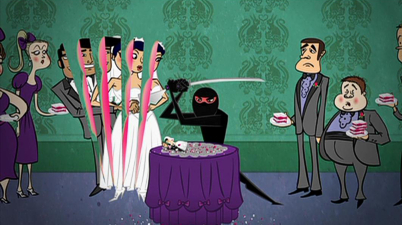
Finding himself a victim of the Comics Code he actually had suggested himself, Gaines found his company faced with bankruptcy, and converted Mad to the magazine format in 1955 to escape from having to have the Code stamped on the cover. Al Feldstein became its new editor and ran the show until the mid-1980s, and although Gaines sold off the magazine in the 1960s to the Kinney Company, he remained Mad Magazine’s publisher until he died in 1992, resisting all attempts to have the magazine carry any advertising and instead choosing to run his own spoof ads.
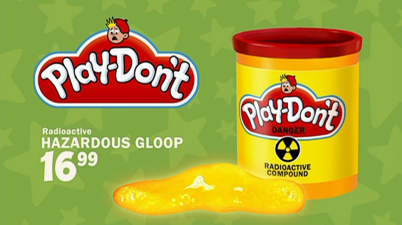
When Kinney also bought National Periodicals – later DC Comics – and Warner Bros. itself, Mad disappeared more into the larger group after Feldstein’s retirement and Gaines’ death, eventually folding into DC, when paid advertising was introduced to pay for upgraded color printing that, it has to be said, took a little something away from Mad, titled as in crazy, not as in angry, and famously “cheap” as printed on each cover under the asking price, a double entendre that I’ve always found amusing.

Over the years there have been a few attempts to bring Mad’s brand of humor in the jugular vein to the screen, including the awful feature Up The Academy in 1980, to which Gaines had loaned the Mad name after the seeing the success of the National Lampoon films that were emerging back then (when Up The Academy proved to be a mess, Gaines paid to remove all reference to Mad from the film, and the magazine produced its own parody, Throw Up The Academy, in protest).

In the 1970s, an animated show was proposed, but only a pilot made that was eventually shown as a special, while Hanna-Barbera developed another aborted attempt in the next decade. From 1995 to 2008, Fox aired MADtv, a Saturday Night Live sketch show that, despite running for 14 seasons and earning numerous award recognition including several Emmy wins, I never did see much of. This program wasn’t really Mad on TV, though, having merely licensed the name, iconic Alfred E. Neuman character and Antonio Prohias’ breakout Spy Vs. Spy for animated interstitials created by Klasky Csupo.
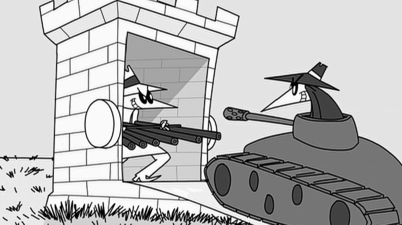
I never did work out why Prohias’ Spy has never been turned into its own animated property: a live-action attempt for some commercials were a fun stab, but really only proved that animation was clearly the way to go, and although a film has been mooted every now and then, it’s not come to pass. Nowadays, with CGI and 3D, there’s surely an open market for such a Spy Vs. Spy project, and although most recently a live-action feature with Ron Howard at the helm has been rumored, I can only dream at what the likes of Pixar’s artists (not that they take on outside content) might add to the years of material already in Mad’s pages.
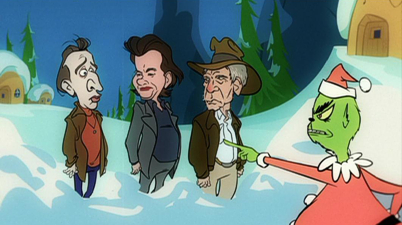
However, now with Mad Magazine having joined the TimeWarner family through its outright ownership of DC Comics and, company synergy being what it is, the magazine’s “new” owners – well, it’s been a while now – have no doubt analyzed how to “maximise the brand” in order to make a bit of moolah back on their investment and, in turn, advertise the original Magazine and attract new readership to it. The result is this new Mad, largely the work of the multi-talented writer-producer Kevin Shinick – a Cartoon Network Adult Swim alumni also responsible for collaborating with Seth Green on Robot Chicken – and pleasingly rendered in animation like it should be, created thoroughly in tune and in keeping with what has made the original Mad unique for all these years.

Forgoing the current trend of spiteful, expletive infused “comedy” that sadly now seems to be the norm, Mad Magazine has always taken pot-shots, but with an affectionate wink to their targets, and this is something that I’m glad has been carried over to this show. I was expecting something more “adult” in tone, not that this Mad show is strictly for kids, with a lot of cussing and rude remarks in place of real laughs, and was delightfully surprised when this turned out not to be the case. Mad Magazine has always been silly-funny, with plenty of sly digs and sometimes groaningly awful puns (which I love), and it’s this playful approach that continues with Mad, the series.
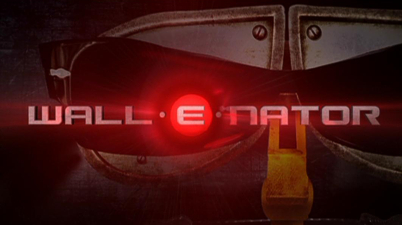
Like each issue of the Magazine, the Mad show lines up each episode’s items in fairly routine manner: we get a “main feature” movie or TV pastiche, a fake advertisement or two, Spy Vs. Spy, a celebrity putdown, some other random bits of business that recall the page fringe doodles of the printed edition, and another spoof of something or other, all featuring ideas lifted from the Magazine’s pages and “the usual gang of idiots” and squashed into a non-yawn inducing, surprisingly short length of just eleven or so minutes per episode – actually the show’s strongpoint, since it never outstays its welcome.
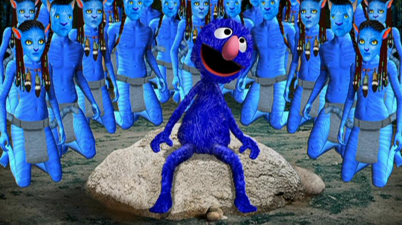
Also keeping things fresh is the never-ending change in animation design: some South Park-style cut-outs for some skits, Robot Chicken-like stop-motion for others, or hand-drawn and Flash-enhanced cartooning elsewhere that mocks work from every studio from Disney to Filmation. Usually the movie lampoons use the original actors’ heads on animated bodies, like South Park does for selected celebrities, and the effect is much the same; an odd-approach which totally works but just feels suitably a little off. Spy Vs. Spy retains its black and white look, perfectly, while at other times Mad Magazine’s famous use of caricature pulls off the right feel for the right pastiche.
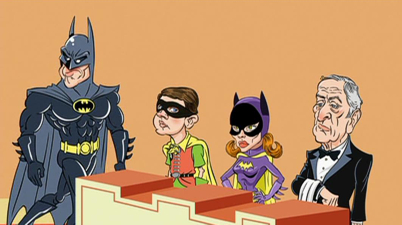
Coming from different animation vendors, each item’s visuals are just one way Mad keeps us entertained: always reflecting popular culture – most often movies, commercials and celebrity – the series continues the magazine’s high rate of laughs coming thick and fast through its writing. Although such translations can be a bit hit and miss, the strike rate here is much more hit than miss, especially with the slight tweaks to the process. With each skit lasting anything from just a few seconds (the amusing fringe gags, for example) to a couple of minutes for the longer clips, it’s akin to flipping the pages over so that there’s always something else on the way to keep us smiling.

And, whereas Mad Magazine would spoof one or two particular big blockbusters in any given issue, often blending in “break-ins” from other movie characters for a panel or two, the Mad series takes that cue but leads with melding two properties together, for a series of fun mash-ups that create their laughs from these unlikely parings. Thus, after an Avaturd pot-shot, which Mad Magazine style points out all the shortcomings of the movie’s plot and obviously but no less amusingly inserts a Smurf and Grover on Pandora, the first episode features CSiCarly, meshing the television crime franchise with the Nickelodeon teen comedy.

Other highlights in this first half season of shows include the fun title sequence, with elements literally bursting from the pages of the print Magazine, a hilarious Disney direct-to-video dig showcasing Bambi’s reanimated Mother’s return in Zombi: Fawn Of The Dead, a spot for the ePhonie crap store, the spot-on Groan Wars, Pirates Of The Neverland: At Wits End, a Keaton-era Batman battling the Joker on Family Feud, Superman’s Fortress Of Solitude on Extreme Renovation, Bear Grylls fighting off a grizzly Pooh Bear, an elaborate Class Of The Titans and S’up where instead of Paradise Falls, Carl ends up pimping his ride.

The final few episodes in this 13-episode collection feature a terrific mash of Mickey and House for – what else? – Mouse MD, a perfectly “Karloff”-narrated Da Grinchy Code, Snot Pilgrim versus the Seven evil Dwarfs, Malcolm In The Middle Earth (“If you don’t turn in your Science Fair project, you will not pass!”), as well as asking the questions no-one dared ask before (“What was the best thing before sliced bread”, “If it’s a TV set, how come you only get one?”) and various swipes at Lady Gaga, Justin Bieber and Megan Fox, particularly in the excellently realized Fantastic Megan Fox that captures the feel of Wes Anderson’s film flawlessly.

Mad largely succeeds as a slice of silly fun because it doesn’t take anything seriously, doesn’t feel the need to contemporize itself by adding in bad language for the sake of it, and ultimately sticks true to its printed magazine roots. It’s even fun to see Alfred E. pop up once in a while for a spot gag here and there. As such, Mad turns out to be much better than I was expecting and well in keeping with the Magazine that I, along with many others, used to keep hidden in my school bag. Truth be told, I haven’t read a copy for a while now, but this series has achieved what it sets out to do: bring Mad Magazine to the screen successfully as well as now prompting me to go out and find the print edition!
Is This Thing Loaded?
Frustratingly, Warner Home Video continues its policy of releasing television seasons in multiple sets, meaning that although Mad’s purchase price is around a reasonable $15 online for two and a half hours of content, we only get the first half of the first season here on a single disc, when surely a two-disc set of the entire run would have been preferable. An addition – or not, actually, as is the case – there are no bonus features whatsoever, whereas I am sure I’ve seen documentary material on Mad Magazine’s celebrated print edition that might have made for some nice context here.

All there is are a handful of trailers for other WB discs – the Looney Tunes: Platinum Collection on Blu-ray, Young Justice, ThunderCats and The Looney Tunes Show – although again I suppose one can’t complain too much for the amount of content on the disc and the low list price.
Case Study:
Surprisingly for a “budget” disc, Mad gets a bright o-sleeve slipcover that makes the package feel a bit more special. Unfortunately, they don’t really do anything with this considering that the Magazine regularly included a fold-in feature on its back cover that converted one image into another. The idea of ripped paper is inherent in the design, but why not go the extra step and actually cut-out these strips and have different cover artwork underneath? Instead, the sleeve and the slipcase replicate each other rather redundantly, and although there is the amusing suggestion that the case makes a “cool soda-can coaster” (usually the function of a non-working disc, no?), it would have been really cool if they’d printed something on the inside of the slipcase to make this more fun.
Ink And Paint:
With two and a half hours of content on the disc, Warners can’t be accused of stacking too much on this platter, in keeping with their usual high standards of compression. As such, the various animation styles never display any form of visual hindrance, but the show as a whole bizarrely does: presented in a “standard aspect ratio of its television exhibition” I refuse to believe that Mad is shown in 4:3 letterbox on its Cartoon Network airings.
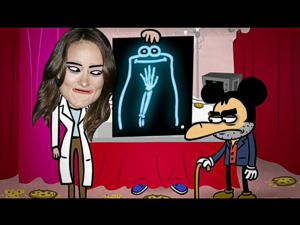
But that’s what we get here even though it’s clear the program is created in native 16:9 – and probably in HD – which is a pretty sorry state of affairs. Luckily, but only just, the bright transfer and lack of compression means it can be blown up to fit a widescreen display and sustains a reasonable amount of quality…but, really, letterboxed transfers should be a thing of the past by now.
Scratch Tracks:
Offered in Dolby Surround, each item’s mix is as good as each skit needs it to be, from sometimes minimal low-level murmurs to loud and bombastic music, usually synthesized but sounding pretty genuine. The recording and mixing again reflects the kind of audio we’d usually associate with the kind of content being lampooned, with spot-on impressions and timing, so everything sounds authentic as needed, which is where some of the laughs can be found. English hard of hearing and French subtitles are included.
Final Cut:
Going in expecting an Adult Swim styled contemporary re-tooling of Mad Magazine to bring it “up to date”, I was pleasantly surprised to find the old approach still very much intact and funny as ever. The various animation designs keep things fresh and feeling very much contemporary, while the writing and performing is as fast and furious as it needs to be for the modern world. Perhaps more wry and hugely amusing rather than being laugh out loud hilarious – though I did break out in giggles quite a few times at least – fans of the original Magazine should find that Mad has found a good home on screen, in the hands of people who simply get the material. Warners’ half-season release policy and the letterboxed lack of 16:9 do frustrate, but I can’t wait to see more Mad!
 | ||
 |


